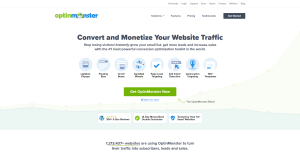Understanding the unique dynamics of various social media platforms is crucial in maximizing the potential of your digital presence. In the realm of social media content adaptation, finding the right tone, format, and visuals for each platform can make a significant difference in your brand’s visibility and engagement levels. Content writing is an art and science, with its success largely dependent on the adept understanding and exploitation of each platform’s unique features and audience preferences.
From optimizing your content for maximum engagement to measuring the effectiveness of your strategies, this article ‘Crafting Content for Social Media Success’ walks you through the essential steps to successful content adaptation. Discover how to harness the power of social media to increase your reach and conversion rates, ultimately boosting your business success.
”Summary
Understanding the importance of social media content adaptation is key to meeting user expectations across various platforms. By tweaking the format, tone, and visuals, businesses can optimize their visibility and engagement, leading to enhanced brand image and higher conversion rates. This concept of adaptation is crucial to fully exploit the potential of social media platforms.
It’s not just about understanding the unique features of each platform, but also about customizing content to appeal to the audience’s demographics and interests. This can lead to improved engagement and success.
Optimizing content for engagement with appealing visuals and the use of platform-specific features like Instagram Stories, Twitter hashtags, or Facebook Groups is essential. This requires a deep understanding of audience preferences on each platform.
Measuring the effectiveness of your social media content adaptation strategy is just as important. Integrated analytics tools, as well as third-party tracking tools, provide detailed metrics that can guide informed decisions about your strategy.
Understanding the Importance of Social Media Content Adaptation
Before diving into the strategies and techniques of social media content adaptation, it’s crucial to understand why this concept is so important in today’s digital world. Social media platforms have become the primary communication channels for businesses and their audiences. However, not all content is suitable for every platform, thus the need for adaptation arises.
The Role of Social Media Content Adaptation
Social media content adaptation is the process of modifying and customizing your content to fit the specific requirements and audience preferences of each social media platform. This could involve changes in content format, tone, length, or visuals. The importance of this process lies in the fact that each social media platform has its unique user base with different expectations, behaviors, and preferences. For instance, LinkedIn users expect professional, long-form content, while Instagram users prefer visually appealing, short-form content. Therefore, adapting your content to suit each platform’s audience is essential to maximize your content’s visibility and engagement.
The Impact of Social Media Content Adaptation on Business Success
The adaptation of content for social media can have a significant impact on your business success. First, it can increase your content’s reach and engagement, as tailored content is more likely to resonate with the specific audience of each platform. Second, customized content can improve your brand image and credibility, as it shows your audience that you understand their needs and preferences. Third, effective content adaptation can lead to higher conversion rates, as it allows you to deliver the right message at the right time to the right audience. For instance, a well-crafted and adapted Instagram post can drive more traffic to your e-commerce site than a generic, one-size-fits-all post.
In conclusion, understanding the importance of social media content adaptation is the first step towards leveraging the power of social media platforms for your business. Remember, it’s not about posting the same content everywhere, but about crafting and adapting your content to fit each platform’s unique context and audience.
Key Strategies for Adapting Content to Different Social Media Platforms
Adapting your content to different social media platforms is crucial to maximizing your reach and engagement. Each platform has its unique features and audience characteristics that you should consider while crafting your social media content. This section will discuss two key strategies for effective social media content adaptation.
Understanding the Unique Features of Different Platforms
The first step in social media content adaptation is understanding the unique features of different platforms. For example, Twitter is a text-based platform that limits posts to 280 characters, making it ideal for quick updates or announcements. Instagram, on the contrary, is a visual platform where images and videos are the prime focus. Users expect high-quality, aesthetically pleasing visuals. LinkedIn is a professional network where industry-specific, informative content performs best. By understanding these unique features, you can adapt your content accordingly to attract and engage the audience on each platform.
Customizing Content to the Platform’s Audience
Another crucial strategy is customizing your content to the platform’s audience. The demographics and interests of users may vary significantly across different social media platforms. For instance, Snapchat has a younger user base compared to Facebook. Therefore, a more casual, relaxed tone may work better on Snapchat, while a more formal tone may be appropriate for Facebook. It’s essential to research the audience on each platform and tweak your content to cater to their preferences and expectations for effective social media content adaptation.
In conclusion, adapting your content to different social media platforms involves understanding the unique features of each platform and customizing your content to cater to the audience on each platform. By doing so, you can ensure your content resonates with your audience, leading to increased engagement and success on social media.
Optimizing Content for Maximum Engagement on Social Media
Engagement is a critical metric for social media success. It signifies the level of interaction your audience has with your content. To maximize engagement, your social media content adaptation needs to be optimized. Let’s explore the key elements of this optimization process.
Optimization for Engagement: The Power of Visuals
Visual elements are a crucial aspect of social media content adaptation for engagement. In fact, according to a report by Social Media Examiner, visual content is more than 40 times more likely to get shared on social media than other types of content. This is because visuals are more appealing, easier to digest, and more shareable than text-only content. For example, you can adapt a blog post into an infographic for platforms like Pinterest or Instagram to leverage the power of visuals.
Optimization for Engagement: Leveraging Platform-Specific Features
Each social media platform offers unique features that can be leveraged to maximize engagement. For instance, on Instagram, you can use the ‘Stories’ feature to share behind-the-scenes content or conduct polls. On Twitter, hashtags can amplify the reach of your content. Facebook has ‘Groups’ where you can build communities around your brand. Utilizing these platform-specific features in your social media content adaptation strategy can significantly enhance engagement.
Remember, optimizing content for engagement is about more than just publishing content that your audience likes. It’s about creating content that stimulates interaction, encourages sharing, and builds relationships. And this requires a deep understanding of your audience, their preferences, and the unique features of each social media platform.
Measuring the Effectiveness of Your Social Media Content Adaptation
Measuring effectiveness is crucial in any marketing strategy, and it’s no different when it comes to social media content adaptation. This process involves tracking and analyzing the performance of your adapted content across various social media platforms. By doing so, it allows for necessary adjustments to be made for higher engagement and better results. Now let’s delve into two key methods for measuring the effectiveness of your social media content adaptation.
Utilizing Social Media Analytics
Most social media platforms offer built-in analytics tools. For instance, Facebook’s Insights and Twitter’s Analytics provide detailed metrics about your content’s performance. These tools can show how well your adapted content is doing in terms of reach, engagement, and conversion. An example of this is tracking the number of shares or likes a post receives, or the number of click-throughs to your website. By evaluating these metrics, you can understand if your content is resonating with your audience and leading to desired actions, making social media analytics a vital part of measuring social media content adaptation effectiveness.
Employing Third-Party Tracking Tools
If you want to take a step further, there are numerous third-party tracking tools available that offer more in-depth analysis. Tools like Hootsuite, Buffer, or Sprout Social not only help manage multiple social media accounts but also provide comprehensive analytics. From tracking audience growth, identifying top-performing content, to monitoring specific keywords or hashtags related to your business, these tools provide a wealth of information. This data can guide you in making informed decisions regarding your social media content adaptation strategy.
Conclusion
Understanding the importance of social media content adaptation is crucial for any business wishing to maximize its online presence. By tailoring your content to the specific quirks and audience demographics of each platform, you can significantly boost visibility, engagement, and conversion rates. Using attractive visuals and platform-specific features can help drive engagement even further. However, it’s essential not to simply set and forget your strategy, but to continually measure its effectiveness using built-in analytics tools or third-party trackers. By keeping an eye on reach, engagement, and conversion metrics, you can make informed decisions and continually refine your approach to social media content adaptation for optimal success.

